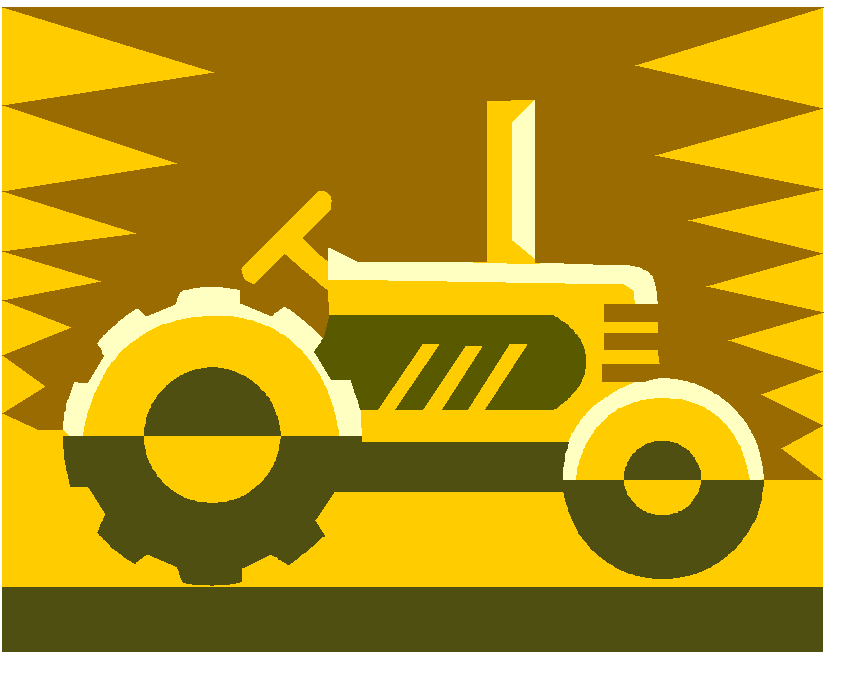Description
IRS Tax Audit Manual for the Grain Farmers Industry

Overview of the industry. Provides terminology. Topics discussed include underreporting of income, employment taxes, accounting methods, government farm programs, etc.
TABLE OF CONTENTS
- Chapter 1 INTRODUCTION
- Purpose of Guide 1-1
- Compliance Potential 1-1
- Nature of Farming 1-2
- Risk 1-2
- Capital 1-3
- Chapter 2 PRODUCTION CYCLES
- Introduction 2-1
- Wheat 2-1
- Winter Wheat 2-2
- Soil Preparation and Planting 2-2
- Fertilization 2-2
- Harvesting and Storage 2-2
- Marketing 2-3
- Corn 2-3
- Soil Preparation 2-4
- Planting 2-4
- Irrigation 2-4
- Harvesting 2-5
- Silage 2-5
- Marketing 2-5
- Soybeans 2-6
- Double Cropping 2-6
- Harvesting and Uses 2-6
- Sorghum (Milo) . 2-7
- Planting 2-7
- Harvesting 2-7
- Alfalfa 2-8
- Soil Preparation and Planting 2-8
- Grazing 2-8
- Harvesting and Storage 2-8
- Marketing 2-9
- Chapter 3 EXAMINATION TECHNIQUES
- Document Request 3-1
- Farm records 3-1
- Books and Records Needed 3-2
- Interview 3-2
- Initial Interview 3-2
- Visual Inspection 3-3
- Chapter 4 EMPLOYMENT TAXES IRM 4034
- Required Filing Checks –
- Employment Taxes 4-1
- Form 943, Employers Annual Tax Return
- for Agricultural Employees 4-1
- Law Changes and Potential Examination Issues 4-2
- Treatment of Non-Cash Wages 4-3
- Examples of Noncash Wage Agreements 4-5
- Self-Employment Tax Attributable to
- Compensation in Commodities 4-5
- Filing Return and Depositing Tax 4-6
- Form 940, Employers Annual Federal
- Unemployment Tax Return 4-7
- Form 1099, Information Returns 4-8
- Chapter 5 ACCOUNTING
- Accounting Periods 5-1
- Partnerships and Subchapter S-Corporations 5-1
- Accounting Methods 5-2
- Cash Receipts and Disbursements Method
- (Cash Method) 5-2
- Accrual Method 5-3
- Income 5-3
- Special Methods of Accounting for
- Certain Items 5-4
- Combination (Hybrid) Methods 5-4
- Change in Accounting Method 5-4
- Inventory Valuation Methods 5-6
- Farm-Price Method 5-6
- Unit-Livestock-Price Method 5-7
- Uniform Capitalization Rules 5-7
- Resources 5-8
- Chapter 6 INCOME
- Introduction 6-1
- Sale of Crops and Produced Items 6-2
- Grain Crops 6-3
- Hay Crops 6-4
- Constructive Receipt of Income versus
- Installment Sale Reporting of Income 6-5
- Installment Sales 6-5
- Constructive Receipt 6-6
- Examination Techniques 6-7
- Resources 6-7
- Crop Shares 6-8
- Material Participation 6-8
- Examination Techniques 6-9
- Various Contracts 6-9
- Deferred Product Sales 6-9
- Price Later Contracts (PLC) 6-10
- Distributions from Cooperatives 6-11
- Patronage Dividends 6-11
- Other Receipts 6-12
- Examination Techniques 6-12
- Easements and Rights-of-Way 6-13
- Other Farm Income 6-13
- Machine Work 6-13
- Chapter 7 GOVERNMENT FARM PROGRAMS
- Agricultural Program Payments 7-1
- Limitation on Total Payments 7-3
- Cash Payment Programs 7-3
- The Deficiency Program 7-3
- The Diversion and Set-Aside Program 7-4
- The Farm and Warehouse Storage Program 7-5
- Conservation 7-5
- Cost Sharing Exclusion 7-5
- Income Realized 7-6
- Effects of the Exclusion 7-7
- Conservation Reserve Program (CRP) 7-8
- Resources 7-9
- Commodity Credit Corporation Loans 7-9
- Commodity Credit Loans 7-10
- Loan Method 7-11
- Income Method 7-13
- Market Gain 7-15
- Examination Techniques 7-16
- General Rules for Reporting Loan Data 7-18
- Reporting Program Payments 7-19
- Commodity Credit Certificates (PIK) 7-21
- Crop Insurance and Disaster Payments 7-22
- Examination Techniques 7-24
- Chapter 8 HEDGING FARM COMMODITIES
- Definition of a Hedging Transaction 8-1
- The Futures Market 8-2
- The Options Market 8-3
- Hedging Cattle 8-3
- Hedging Grain Crops 8-4
- Transaction Analysis 8-4
- Identification Rules 8-5
- Timing Rules 8-8
- Examination Techniques 8-8
- Chapter 9 CANCELLATION OF INDEBTEDNESS
- General Rule 9-1
- Discharge of Deductible Debt 9-1
- Reduction of Purchase Money Debt 9-1
- Cancellation by Gift 9-2
- Exclusions from Income 9-2
- Title 11 Case 9-3
- Insolvency 9-3
- Qualified Farm Indebtedness 9-5
- Qualified Real Property Business
- Indebtedness 9-6
- Priority of Exclusions 9-7
- Reduction of Tax Attributes 9-7
- Order of Reduction 9-7
- Amount and Manner of Reduction 9-8
- Election to Reduce Basis of
- Depreciable Property 9-9
- Partnerships and S-Corporations 9-11
- Shareholder-Corporation Transactions 9-11
- Forgiveness of Shareholder Debt 9-12
- Acquisition of Debt by Related Party 9-12
- Examination Techniques 9-12
- Chapter 10 FORECLOSURES, REPOSSESSIONS, AND ABANDONMENTS
- Debt Discharged by Transfer of Property 10-1
- Transfer Treated as a Sale or Exchange 10-1
- Discharge of Recourse Debt 10-1
- Discharge of Nonrecourse Debt 10-2
- Discharge of Debt Secored by Property 10-2
- Character of Gain or Loss 10-2
- Abandonment of Property 10-3
- Information Reporting 10-3
- Examination Techniques 10-4
- Chapter 11 FARM BUSINESS EXPENSES
- Introduction 11-1
- Methods of Accounting 11-1
- Deposit or Payment 11-1
- Prepaid Expenses 11-2
- General Farm Expenses 11-3
- Feed 11-3
- Seed 11-3
- Fertilizer 11-4
- Chemicals 11-4
- Fuel 11-4
- Insurance 11-4
- Taxes 11-5
- Interest 11-5
- Rent 11-6
- Storage and Warehousing 11-6
- Labor Hired 11-7
- Examination Techniques 11-7
- Repairs and Maintenance 11-7
- Meals and Lodging 11-8
- Personal Living Expenses 11-8
- Examination Techniques 11-9
- Soil and Water Conservation Expenses 11-9
- Chapter 12 BASIS AND SALES OF THE FARM AND FARM ASSETS
- Background 12-1
- Basis of Farm Assets 12-1
- Property Acquired in Trade 12-2
- Property Received as a Gift 12-4
- Inherited Property 12-5
- Selling the Farm 12-6
- Selling the Farm Residence 12-6
- Standing Crops Sold With a Farm 12-7
- Installment Sales 12-8
- Chapter 13 DEPRECIATION, COST RECOVERY AND IRC 179
- Introduction 13-1
- Depreciation and Cost Recovery 13-1
- Alternative Minimum tax (ATM) Adjustment 13-2
- IRC section 179
- Deduction 13-4
- Listed Property 13-6
- IRC section 179 Recapture 13-7
- Chapter 14 DEPLETION
- Introduction 14-1
- Water Depletion 14-1
- Percentage Depletion 14-3
- Examination Techniques 14-3
- Chapter 15 SALES OF LIVESTOCK
- Introduction 15-1
- Examination Techniques 15-1
- Sale of Items Bought for Resale 15-2
- Examination Techniques 15-2
- Sale of Livestock Held for Draft, Breeding or
- Dairy Purposes 15-3
- Drought Sales of Livestock 15-3
- Livestock Held for Draft, Breeding, or Dairy
- Purposes (Tax Treatment #1) 15-4
- Deferring Income to Subsequent Year (Tax treatment #2) 15-5
- Examination Techniques 15-7
- Chapter 16 CREDITS
- Introduction 16-1 General Business Credit 16-1
- Regular Investment Tax Credit 16-1
- Forestation and Reforestation 16-1
- Rehabilitation Credit 16-2
- Business Energy Investment Credit 16-2
- Basis Adjustment 16-2
- Carrybacks and Carryovers 16-3
- Recapture of Investment Credit 16-4
- Fuel Tax Credits 16-4
- Federal Gas Tax Rates 16-5
- Excise Tax Credit 16-5
- Diesel Fuel 16-6
- New Tax Law on Dyed Diesel 16-7
- Gasoline 16-8
- Claiming the Credit 16-8
- IRC section 6675 Penalty 16-10
- GLOSSARY G-




